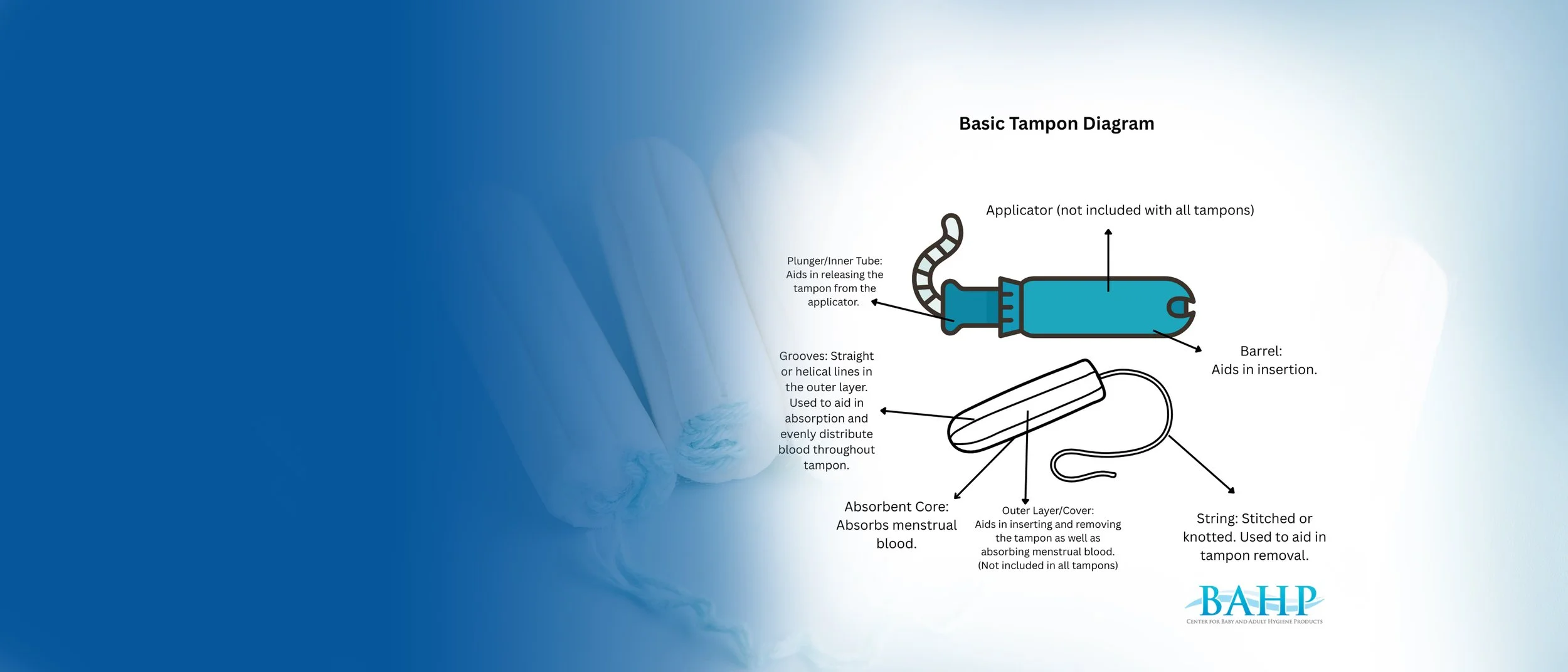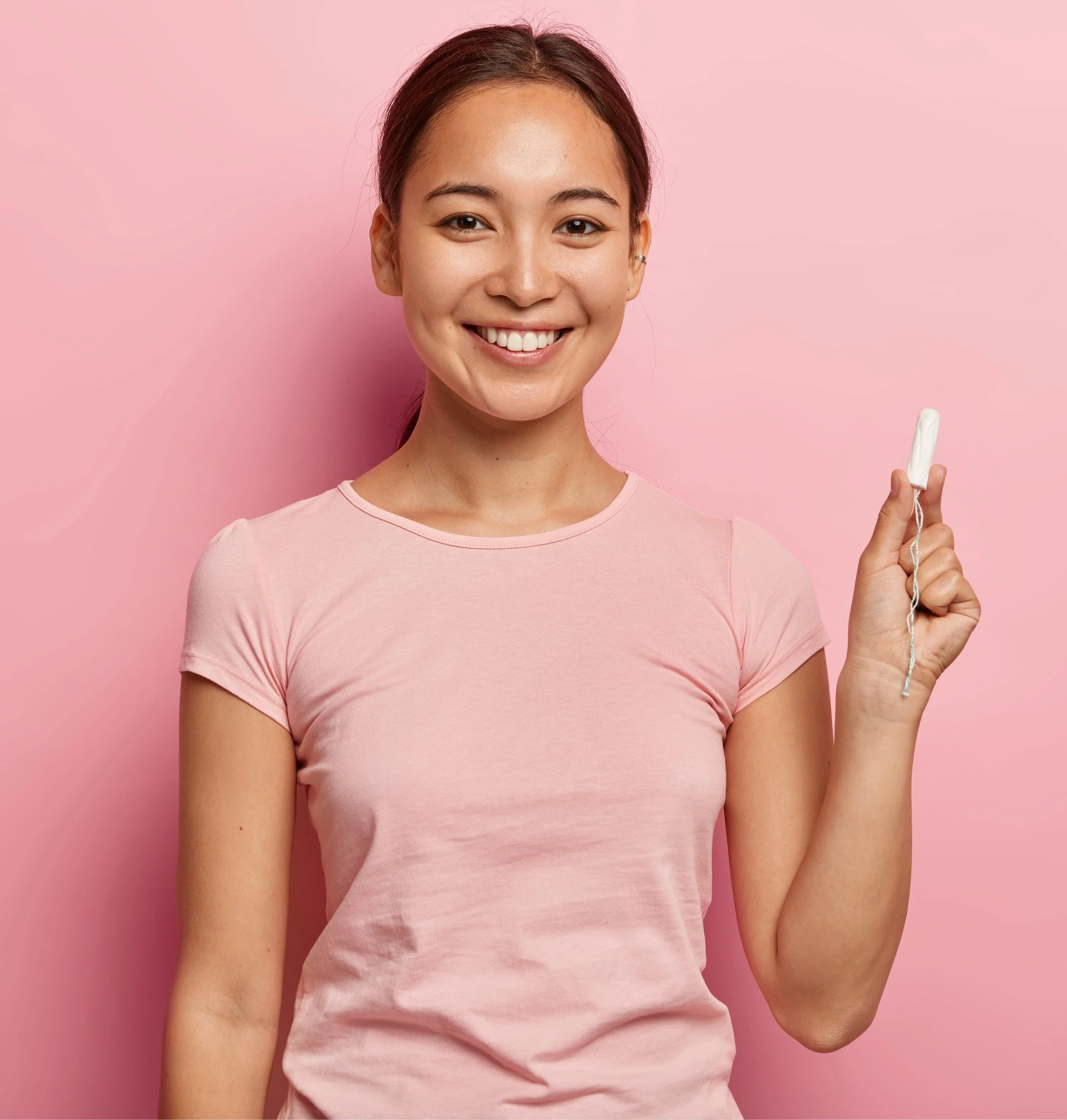Tampons
Use
Tampons are designed for menstrual flow use only. Because they absorb menstrual flow in the vagina, women are able to participate in activities that require more discrete protection and freedom of movement, like swimming.
Tampons come in different absorbencies, so women can choose the tampon best suited for their menstrual flow needs.
Types of tampons include:
Digital tampons: Have no applicator and are inserted manually with the finger.
Applicator tampons: Inserted with an applicator made of cardboard or plastic.

What are the parts of a tampon?
The main components of modern tampons may include:
Absorbent material/Pledget: Cotton and/or rayon that absorbs and retains menstrual flow. (Tampons do NOT contain super absorbent polymers (SAP), also known as super absorbers.)
Nonwoven/perforated film: A thin, smooth layer that wraps around the absorbent material.
Cord/string: Securely attaches to the tampon to allow for easy removal of the tampon. It can be made of cotton or other fibers.
Applicator: Often made of coated paper or plastic and designed to help make tampon insertion easier.
Wrapper: Paper or a thin plastic that individually wraps the tampon before it is packaged in a carton. It keeps the tampon clean and protected until use.
Fragrance: Fragrances are substances used to make products smell nice and to help mask malodors. Not all tampon products contain fragrance components.
Colors: Inks and pigments, that are used in small amounts, to assist in the identification of components for ease of use and to make the products more appealing to use.
*All information on this page is a general description and may not precisely reflect the products of our member companies.*



